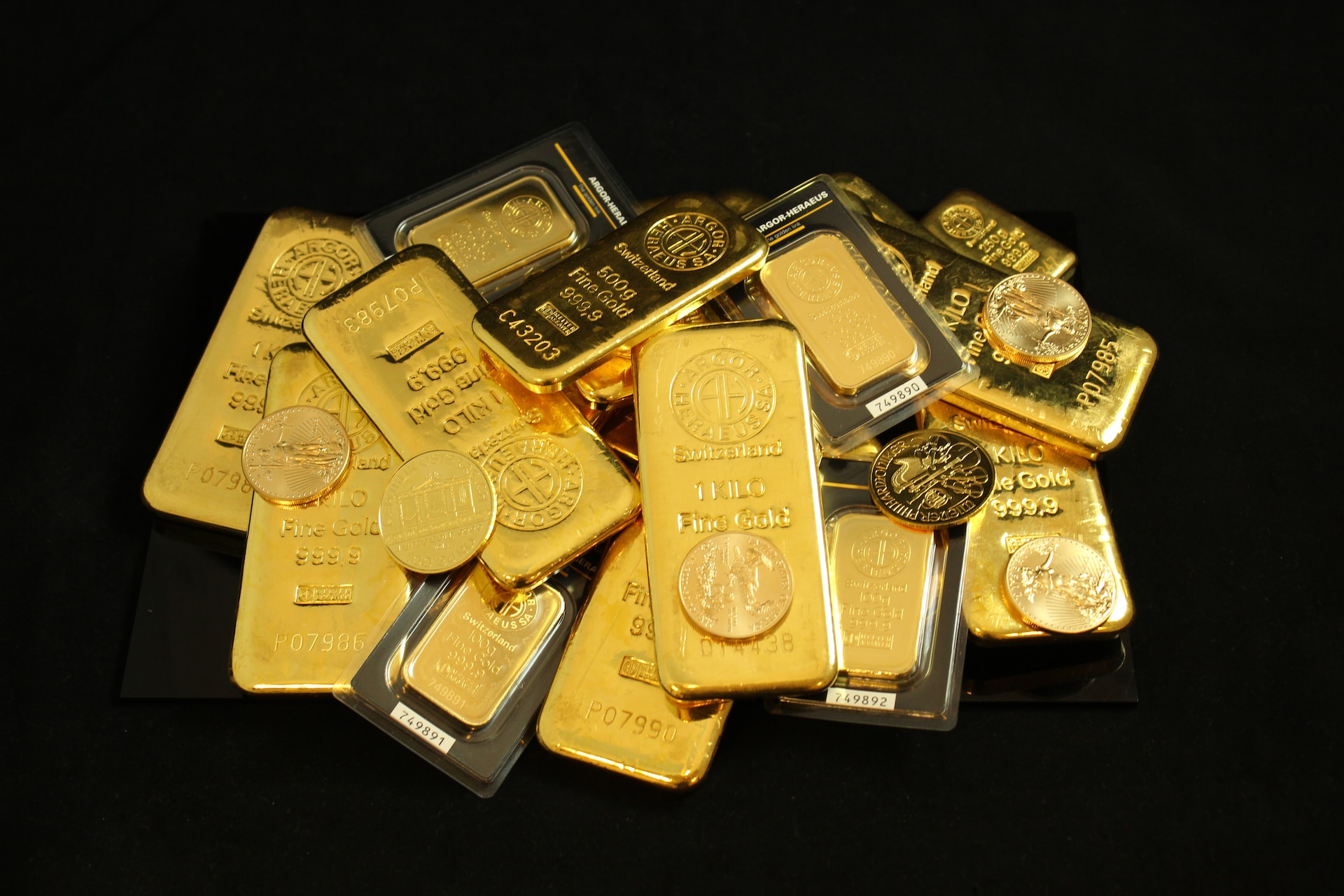Gold has long captivated the human imagination with its gleam and allure. It’s not just a symbol of luxury but a tangible asset that carries a value appreciated across centuries. This article delves into the intricate world of gold bars, particularly focusing on the value of a 1-ounce gold bar. We’ll explore its history, measurement units, and its current market price as of February 23, 2023. This journey will help demystify the worth of gold and provide you with a clearer understanding of its place in the global economy.

The Weight of Wealth: A Brief Introduction to Gold Bars
Gold bars, also known as gold ingots, are metallic blocks made from pure gold. They have been a hallmark of wealth and prosperity for millennia. Gold has been treasured since ancient times for its rarity, beauty, and intrinsic value. It doesn’t corrode, tarnish, or lose its luster, making it a timeless store of value.
Gold bars come in various sizes, but when it comes to determining the live gold prices, the 1-ounce gold bar is the standard unit of measurement. This consistency in measurement allows for global comparability and ease of trading. However, it’s important to note that gold’s weight is typically measured in troy ounces, not the standard avoirdupois ounces used for everyday items.
The Troy Ounce
Troy ounces are the universal standard when it comes to measuring precious metals, including gold. Unlike avoirdupois ounces, which are used in the daily measurement of goods, troy ounces are commonly used in the precious metals industry.
The distinction between troy ounces and avoirdupois ounces may seem subtle but is essential for understanding the value of gold. A troy ounce is equivalent to approximately 31.1035 grams, while an avoirdupois ounce is approximately 28.3495 grams. This seemingly small difference has significant implications when dealing with precious metals, as it means that a troy ounce of gold is heavier than a regular ounce.
Decoding the Gold Weight Classification
Gold bars come in a variety of weights, with some of the most common denominations being 1 gram, 1 ounce, and 1 kilogram. These different classifications cater to various preferences and investment strategies.
1. 1 Gram Gold Bars: These minuscule gold bars are an excellent option for those who wish to invest in gold but do not have a substantial amount of capital to spare. As of February 23, 2023, the estimated price for a 1-gram gold bar is approximately $58.62.
2. 1 Ounce Gold Bars: The 1-ounce gold bar, our primary focus, is often considered the standard for calculating live gold prices. As of February 23, 2023, its estimated price is around $1,823.34.
3. 1 Kilogram Gold Bars: These substantial gold bars are for serious investors. A 1-kilogram gold bar is equivalent to approximately 32.15 troy ounces. Its estimated price as of February 23, 2023, is about $58,621.70.
It’s important to note that these prices are indicative and subject to fluctuations in the global gold market.
Historical Perspective: The Evolution of Gold’s Worth
To understand how much a 1-ounce gold bar is worth today, we must consider the historical context of gold’s value. Gold has been a medium of exchange for thousands of years. Its worth as currency, jewelry, and a store of value has remained remarkably consistent.
Throughout history, gold has been used in coinage, from ancient civilizations like the Greeks and Romans to the modern-day issuance of gold bullion coins by governments and central banks. The historical significance of gold as a medium of exchange has laid the foundation for its enduring value.
The Gold Standard: Pegging Currency to Gold
In the 19th and early 20th centuries, many countries operated on the gold standard. Under this system, a nation’s currency was directly linked to a specific quantity of gold. The U.S. dollar, for example, was pegged to a fixed amount of gold, creating stability in exchange rates and fostering global trade.
During this era, one ounce of gold was officially worth $20.67 in the United States. This standard was later adjusted to $35 per ounce under President Franklin D. Roosevelt. The gold standard played a pivotal role in the international monetary system, maintaining confidence in currencies and promoting economic stability.
The Abandonment of the Gold Standard
The gold standard began to unravel in the 20th century due to various economic and geopolitical factors. The Great Depression and World War II led to the United States amassing a significant amount of gold reserves, making it the custodian of the world’s gold.
In 1971, President Richard Nixon announced the suspension of the U.S. dollar’s convertibility to gold, officially ending the gold standard. This decision, known as the “Nixon Shock,” had a profound impact on the global financial system, as it severed the direct link between gold and the world’s reserve currency.
As a result of this historic move, gold’s price began to float freely in the global market, and its value was determined by supply and demand dynamics.
Modern Valuation: The Live Gold Price
Since the end of the gold standard, the value of gold has been subject to market forces. Gold prices fluctuate daily, driven by a variety of factors, including economic conditions, geopolitical events, and investor sentiment.
The price of gold is often expressed in U.S. dollars per troy ounce. This is why the 1-ounce gold bar is the standard unit used for calculating live gold prices. It provides a common and easily comparable measure for global investors.
The Determinants of Gold’s Price
Several key factors influence the daily price of gold, including:
1. Supply and Demand: The supply of gold is limited, and new discoveries of substantial gold deposits are relatively rare. As a result, changes in demand or supply can have a significant impact on gold prices.
2. Geopolitical Events: Political instability, wars, and global conflicts can drive up the demand for gold as a safe-haven asset, leading to price spikes.
3. Economic Conditions: Economic downturns, inflation, and currency devaluation can increase the demand for gold as a hedge against financial instability.
4. Central Bank Policies: Decisions made by central banks, such as interest rate changes and monetary policy, can affect the value of currencies and, in turn, the demand for gold.
5. Investor Sentiment: Speculation and sentiment also play a role in determining gold prices. Investor perceptions of future market conditions can lead to rapid fluctuations in the gold market.
Calculating the Value of a 1-Ounce Gold Bar
To calculate the value of a 1-ounce gold bar, you simply need to know the current market price of gold. As of February 23, 2023, the estimated price for a 1-ounce gold bar is approximately $1,823.34.
It’s important to note that this value can fluctuate frequently. Investors and market participants closely monitor gold prices through various financial news outlets and online platforms.
Gold as an Investment: Diversifying Your Portfolio
Gold’s value as an investment goes beyond its worth as a physical asset. Investors often turn to gold to diversify their portfolios and mitigate risk. Here are a few reasons why gold is a popular investment choice:
1. Hedge Against Inflation: Gold has historically retained its value during periods of high inflation, making it an attractive option for investors looking to protect their wealth.
2. Safe-Haven Asset: During times of economic uncertainty or geopolitical turmoil, gold often serves as a safe-haven asset. Investors flock to gold as a store of value when other assets become risky.
3. Diversification: Gold’s performance is often uncorrelated with other asset classes like stocks and bonds. This lack of correlation can help spread risk in a diversified investment portfolio.
4. Historical Long-Term Growth: Over the long term, gold has shown consistent growth in value, making it an appealing choice for investors looking for stability.
Investing in Gold Bars: A Tangible Asset
Investing in gold bars, including the 1-ounce gold bar, allows you to own a tangible piece of this precious metal. It’s a direct way to participate in the gold market, and it provides a sense of security that other forms of investment may not offer.
When you purchase a gold bar, you are essentially acquiring a piece of history. Gold has been used as a store of value for thousands of years and is likely to remain a symbol of wealth and prosperity for generations to come.
The Role of Gold in the Global Economy
Gold plays a crucial role in the global economy, both as a currency reserve and a tangible asset for individuals and institutions. Here are a few key aspects of gold’s role in the modern economic landscape:
1. Gold Reserves: Many central banks and governments hold significant gold reserves. These reserves provide stability and are often used to back their respective currencies.
2. International Trade: Gold is a valuable commodity in international trade. It is used as a medium of exchange in various forms, including jewelry, coins, and bars.
3. Financial Markets: Gold is traded on international financial markets, where it is used as a financial asset. Investors can buy and sell gold in various forms, including futures contracts and exchange-traded funds (ETFs).
4. Currency Hedge: Gold can act as a hedge against currency devaluation. When the value of a currency declines, the price of gold often rises, preserving the real value of investments.
The Gold Market: Buying and Selling Gold Bars
Buying and selling gold bars, including the 1-ounce gold bar, is a straightforward process. Individuals and institutions can engage in gold trading through various channels, such as:
1. Bullion Dealers: Numerous reputable bullion dealers and mints worldwide offer a range of gold bars. These dealers provide a reliable source for purchasing gold bars, ensuring authenticity and quality.
2. Online Platforms: Many online platforms allow individuals to buy and sell gold bars. These platforms often provide a convenient way to invest in gold, although buyers should exercise caution and research the platform’s reputation.
3. Physical Custody Services: Some investors prefer to store their gold bars in secure vaults provided by trusted financial institutions. This option ensures the safety and security of the gold but may come with storage fees.
The Future of Gold: An Everlasting Symbol of Wealth
Gold’s enduring allure and intrinsic value ensure its place in the global economy. While the value of a 1-ounce gold bar may fluctuate with market dynamics, gold remains a symbol of wealth and a trusted investment asset. Its rich history, combined with its ongoing relevance, makes gold a timeless choice for those seeking stability and security in an ever-changing financial world.
Conclusion
In conclusion, the value of a 1-ounce gold bar, like all gold bars, is subject to market fluctuations. As of February 23, 2023, its estimated price is approximately $1,823.34. However, the true worth of gold goes beyond its monetary value. It’s a symbol of prosperity, a store of value, and a hedge against economic uncertainties. Whether you’re a seasoned investor or just someone interested in the world of precious metals, understanding the value of a gold bar can be a step toward unlocking the mysteries of this ageless commodity.
As the global economy continues to evolve, gold will maintain its position as a tangible and timeless asset, embodying wealth and prosperity for generations to come. The 1-ounce gold bar, with its enduring legacy and global recognition, is a reminder of gold’s intrinsic worth in a world that’s constantly changing.





